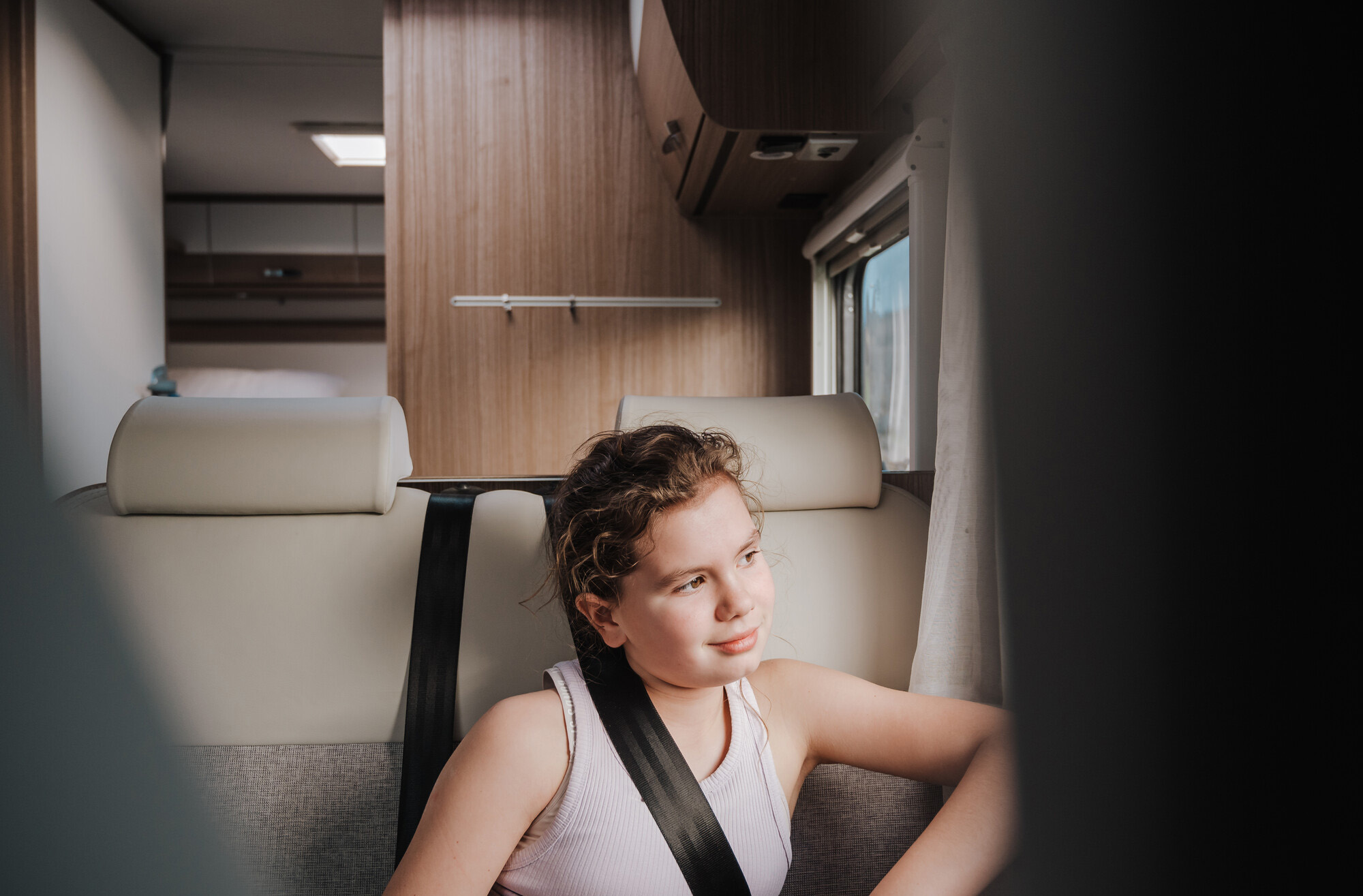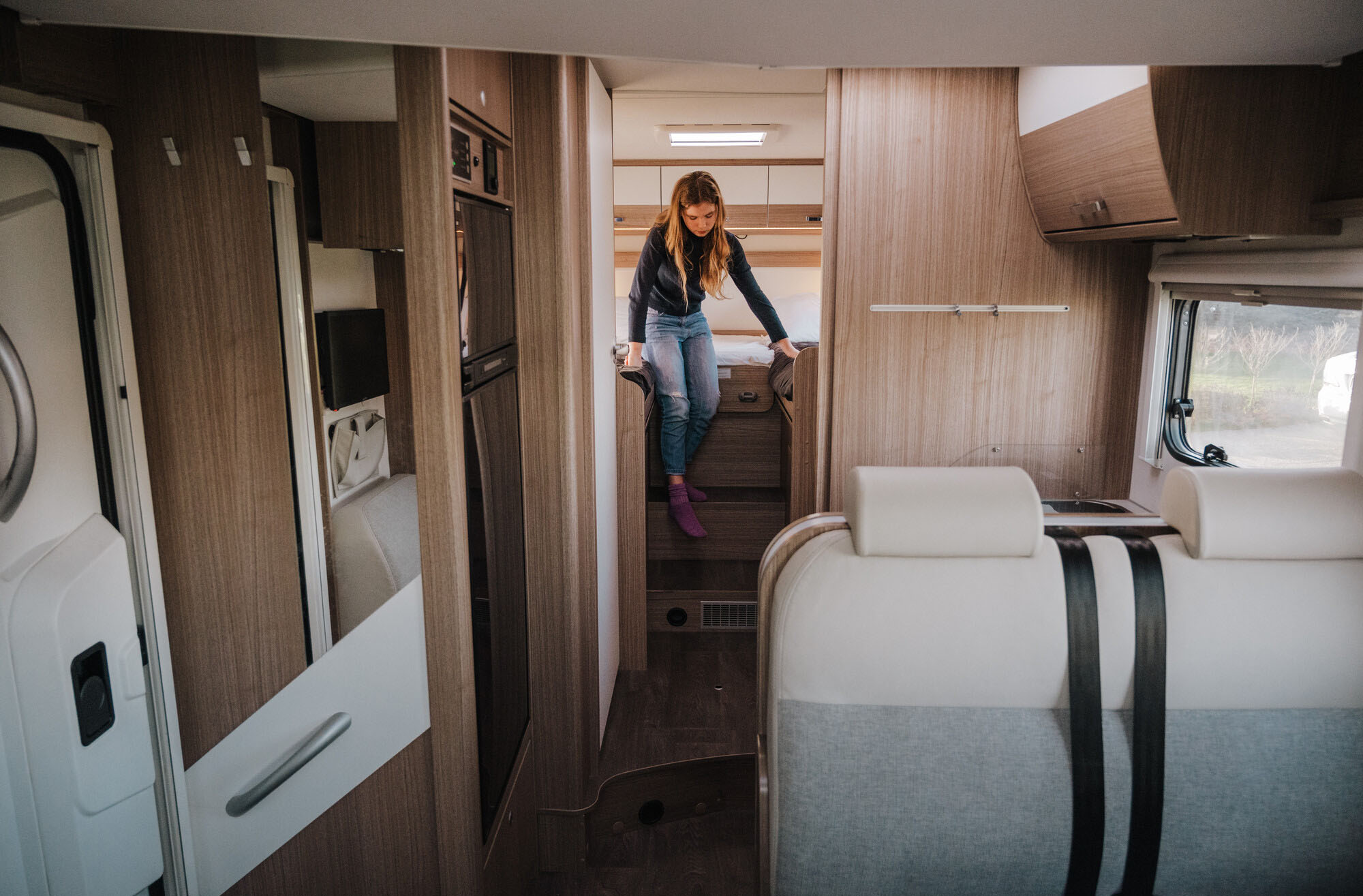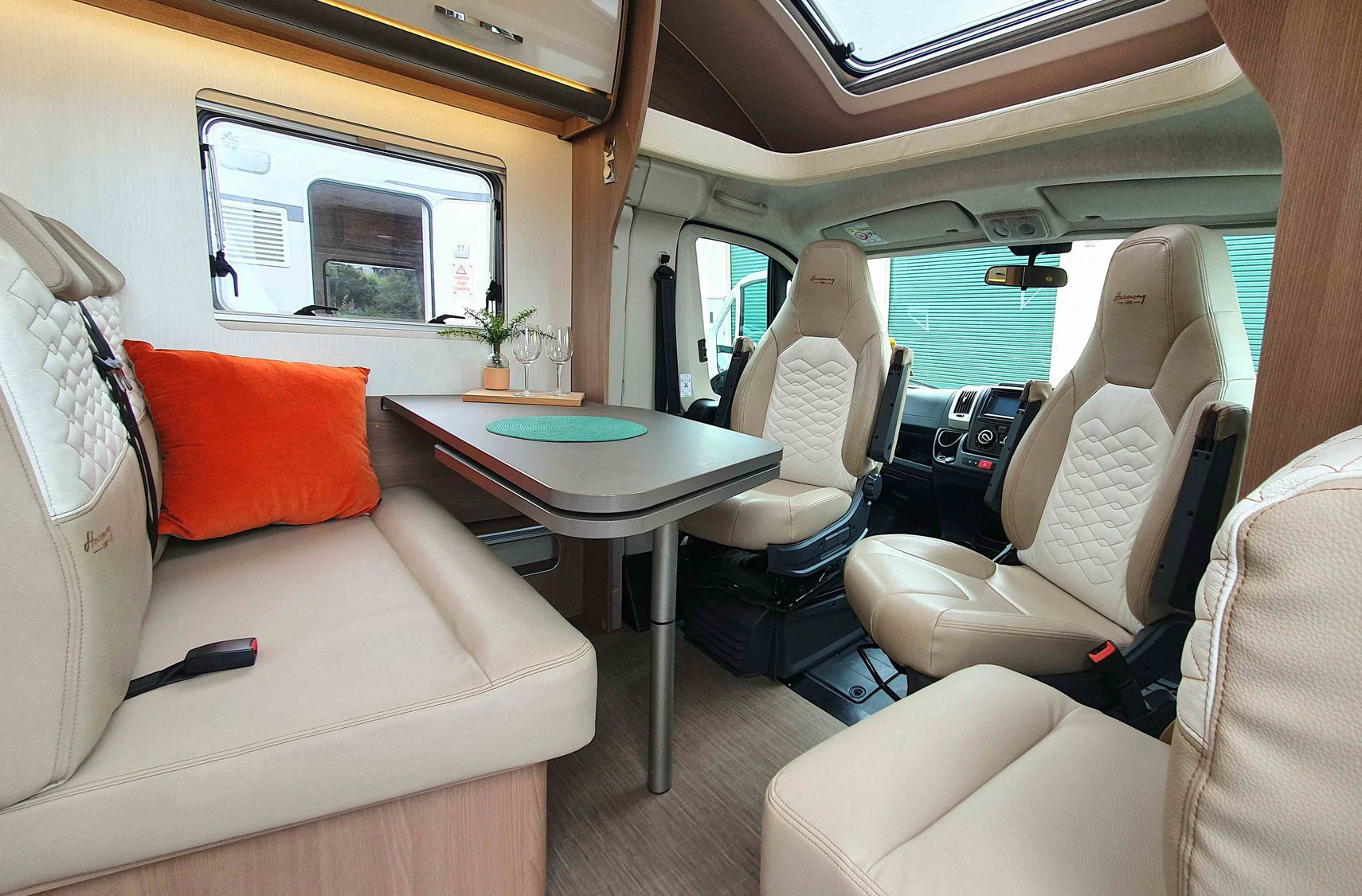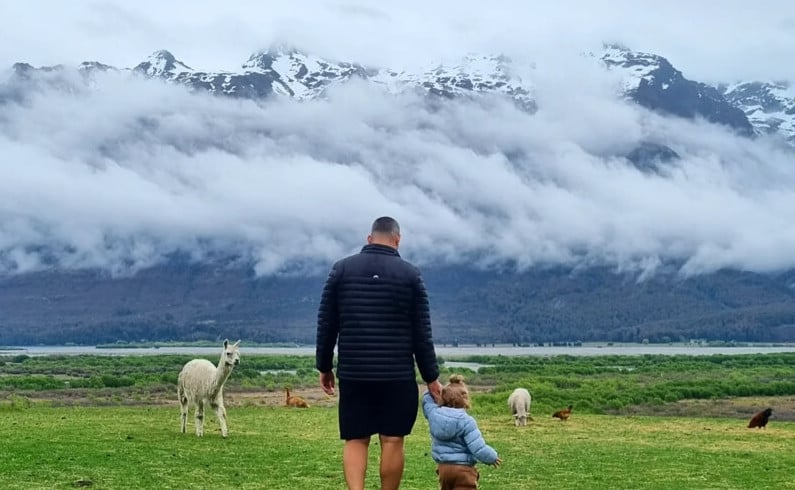Hop inside any vehicle and the first action you’re most likely to take is clipping in your seat belt. It’s almost a subconscious movement — and one that keeps you a lot safer on the roads.
In this blog, we take a look at how motorhome seat belts work and what seat belts are legal in motorhomes in New Zealand. We’ll also discuss whether RV seat belts differ from those in cars and how your onboard kids and pets can travel safely.

How motorhome seat belts work
Seat belts in motorhomes work much the same way as they do in other vehicles — by restraining you and distributing the force of an impact across the strongest parts of your body.
Like the seat belts in your car, motorhome and campervan seat belts function similarly and are designed to:
- Hold you safely in place — stopping your body from being thrown forward
- Prevent injuries — especially to your head, neck, chest and internal organs
- Reduce the severity of any injuries in an accident.
The forces on seat belts can be up to 20 times your body weight. Without their restraint, that’s how hard you’d hit your vehicle’s interior.
Take a look at our article on motorhome safety tips for beginners.
Seat belts in motorhomes in New Zealand
The three-point seat belt (which people use almost exclusively these days) became compulsory in new cars registered in New Zealand in 1965. But it wasn’t until late 2003 that the three-point belt became mandatory in newly-built or converted motorhomes.

Standards-compliant seat belts
Seat belts that meet the New Zealand standard must now fit all front and rear seating positions. The total number of seat belts in your recreational vehicle needs to match the total number of berths (sleeping spots). For example:
- A four berth campervan with two front and two rear seats will need four standards-compliant belts
- A six berth motorhome with two front seats and four rear will have to be fitted with six standards-compliant belts.
The front seats
The driver and front passenger’s seats must be fitted with three-point, dual-sensitive retractor seat belts. If your brakes are unexpectedly slammed in an emergency, these will lock and hold you and your passengers tight.
If there’s a middle seat up front, it’s only required to have a lap belt.
The rear seats
In New Zealand, rear seats in motorhomes can face forwards, backwards or sideways.
Your RV’s rear seats must have lap belts as a minimum, regardless of which direction they’re facing — though they can also be lap-and-diagonal belts.
However, rear seats facing sideways are only allowed to be fitted with lap belts. It’s not legal to upgrade sideways-facing belts to lap-and-diagonal ones. A diagonal belt won’t resist sideways stresses — and can actually cause more harm to your head and neck.
Take a look at our guide to motorhome seating.
|
Lap-and-diagonal belts When considering which motorhome or campervan to purchase, look for three-point, lap-and-diagonal rear seat belts. They’ll save you the extra cost of upgrading lap belts while also providing you with superior protection should you be involved in an accident. |
Check that the motorhome you’re thinking about buying meets the standards detailed by the New Zealand Transport Agency (NZTA).

Giving notice to your fellow passengers
By law, you have to display an easily visible notice in your motorhome’s rear seating area that tells your passengers:
- They should travel on seats fitted with seat belts — for their personal safety
- Where their seats have belts, they must use them.
With seats that can swivel or change direction, you need to display signage showing the direction your passengers have to face to use their seat belts correctly.
|
Responsibility As the motorhome driver, you’re responsible for ensuring that all your passengers wear their seat belts. You risk serious injury to your passengers if they don’t — plus a fine and demerit points on your driver's license. |
How motorhome and car seat belts differ
The function and design of motorhome seat belts are fairly similar to those you’ll find in your car. However, recreational vehicles are bigger and heavier than your average car — making them harder to control and to stop quickly.
Preventing injuries depends heavily on ensuring that your passengers are wearing their seat belts securely.
You may find some minute differences with the design and location of your motorhome’s seat belts — though their core function remains the same.
Safe motorhome travel with kids
Can I lie down on the bed?
If you have young kids, they might ask this question while you’re driving. Ultimately though, not only is it a bad idea — it’s illegal.
Children need the same level of protection they get in your car. As the driver, you’re responsible for ensuring all kids under the age of seven are safely restrained utilising:
- Harnesses (with or without booster seats) — for preschool and school kids
- Car seats — for older babies, toddlers and preschoolers
- Baby capsules — for infants.
Your motorhome may even have seat belts specifically designed for child safety seats in the form of special anchor points and locking mechanisms.
While researching which vehicle restraint will work best for your child, take your motorhome to a reputable safety seat retailer. They’ll be able to check where the anchor points are in your campervan and give advice.

Keeping pets safe while travelling in a motorhome
A pet can be a motorhomer’s best friend. If you plan to bring your pet on tour, it’s important to safely restrain them:
- With a specially-designed harness, or
- In a securely-anchored carrier.
A free roaming pet can get injured, and can even injure your passengers, if you have to stop suddenly or are involved in an accident.
Check out our blog on safety features and technology of German motorhomes.


